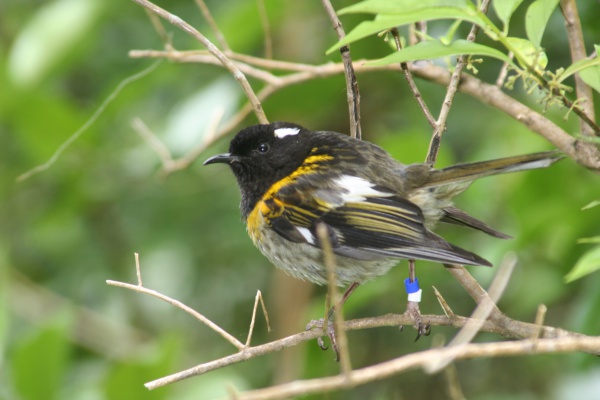Facts About Stitchbird
The stitchbird, or hihi, is a unique bird endemic to New Zealand's North Island and nearby offshore islands. Although superficially resembling a honeyeater, genetic studies have demonstrated that it belongs to its own distinct family, Notiomystidae. Male stitchbirds are striking with their dark caps, white ear-tufts, and yellow breast bands, while females and juveniles exhibit more subdued coloration.
These birds are lively and vocal, frequently emitting a “tzit tzit” call. Their diet primarily consists of nectar, although they also consume native flowers, fruits, and insects. One particularly fascinating aspect of stitchbirds is their rare face-to-face mating behavior. Unfortunately, their numbers have significantly declined due to introduced predators and diseases, leading to their extinction on the mainland by the late 1800s.
Conservationists have been diligently working to reintroduce stitchbirds to various island sanctuaries and even some mainland locations. These efforts have yielded mixed results, with challenges such as genetic bottlenecks and inbreeding.
The International Union for Conservation of Nature (IUCN) classifies the stitchbird as Vulnerable due to its limited range and population size. However, there have been notable successes, including the first recorded breeding on the mainland in over a century. Despite these challenges, ongoing conservation efforts aim to bolster stitchbird populations and ensure the long-term survival of this singular species.
